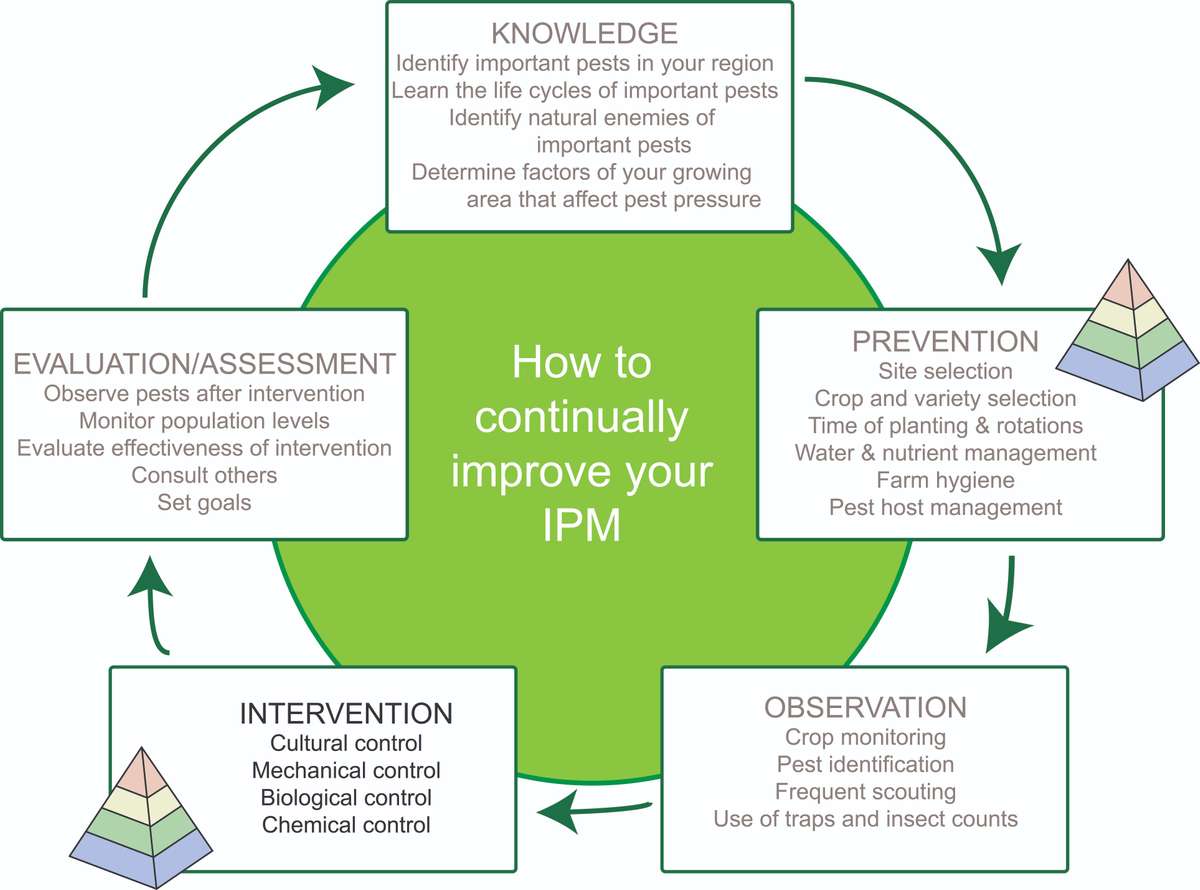The Main Principles Of Pestwise
The Main Principles Of Pestwise
Blog Article
Getting My Pestwise To Work
Table of ContentsWhat Does Pestwise Do?The Pestwise DiariesAn Unbiased View of PestwiseHow Pestwise can Save You Time, Stress, and Money.The Basic Principles Of Pestwise The Pestwise PDFsA Biased View of Pestwise

Q. Define "integrated pest monitoring" (IPM) and list a number of feasible control tactics that might be utilized in an IPM method. A. Integrated insect management is the incorporating of appropriate bug control strategies into a single strategy to minimize insects and their damages to an acceptable level. Parasite control techniques might include: host resistance, organic control, social control, mechanical control, cleanliness, and chemical (pesticide) control.
Facts About Pestwise Uncovered
What can you do to keep the bugs you are attempting to control from ending up being immune to the chemicals you make use of? A. Bug resistance can be minimized by utilizing integrated bug monitoring and rotating the kinds of chemicals used.
Insects are an important threat to the farming service, and integrated parasite management assists growers address and minimize these dangers. Integrated pest management utilizes a number of methods in facility, thus being an extra efficient solution to the issue. Termite Treatment. Specifically, eliminating hostile chemical techniques allows for lessening injury to people and the setting by utilizing natural and more secure options rather
About Pestwise
The objective of incorporated parasite management is to reduce this damage and control appropriate problem levels as opposed to get rid of all undesired populaces. This is why it is very important to understand what measures are warranted in each situation and use hostile ones just when other incorporated monitoring methods do not work. Integrated monitoring mitigates the negative repercussions of a non-IPM method, and the main advantages of IPM Advantages of IPM.
An appropriate understanding of the problem scope establishes if the issue should be dealt with. are the following parts of an IPM program due to the fact that it is crucial to realize if the microorganisms make potential dangers and pick the integrated administration options or the details chemical usage. plan to reduce invasions by using different agronomic methods.
3 Simple Techniques For Pestwise
if avoidance was inefficient. Integrated administration choices in an IPM program beginning with safer to a lot more aggressive ones. As an example, target or program chemical splashing might adhere to manual elimination or trapping that hasn't aided. The above-mentioned integrated management aspects help comprehend how to plan and implement an IPM program step by action: Screen your plants frequently.

Among others, IPM cultural techniques include the following field administration techniques: soil therapy; choice of suitable plants; crop turning; interplanting or strip chopping; option of growing days; weed control; use of catch plants. Beneficial dirt problems speed up plant growth, and vigorous plants are extra immune to problems. Healthy seed startings and seeds determine effective plant growth, so it is vital to choose pest-free planting material with solid roots.
Thus, among various other applications, plant rotation can be effectively made use of as an integrated bug administration technique. Pests spread slower if rows of various plant types divide their host plants in intercropping or strip chopping, which is additionally used in the incorporated bug monitoring system. Conversely, infestations increase when plants of the same plant type or household expand together.
, as well as tomatoes. Growing trap plants in spots is an additional option for IPM intercropping. This incorporated pest administration approach suggests attracting bugs to particular plants and after that regulating them with chemical or mechanical techniques.
Pestwise Fundamentals Explained
Barriers are common examples of physical IPM approaches. Allow's take a better consider them. Removing or choosing bugs out by Our site hand is a time and labor-consuming option that is widely used in integrated monitoring and natural farming. Fully grown pests or their eggs and larvae are accumulated by hand and damaged.

Department of Plant Sciences. This incorporated management method indicates an usual way of damaging bugs by predators, parasitoids, pathogens, and other organic control representatives (aka antagonistic organisms). The function of organic control in IPM is to.
The Ultimate Guide To Pestwise
With time, their populace transformed out to be an actual annoyance to farmers along with native kangaroos or dingoes. The walking cane toad is one more instance highlighting incorporated organic control failure hereof when it rejected to hunt the target species and became an insect itself. Parasitoids develop on or within their hosts to eventually kill them after developing.
Report this page